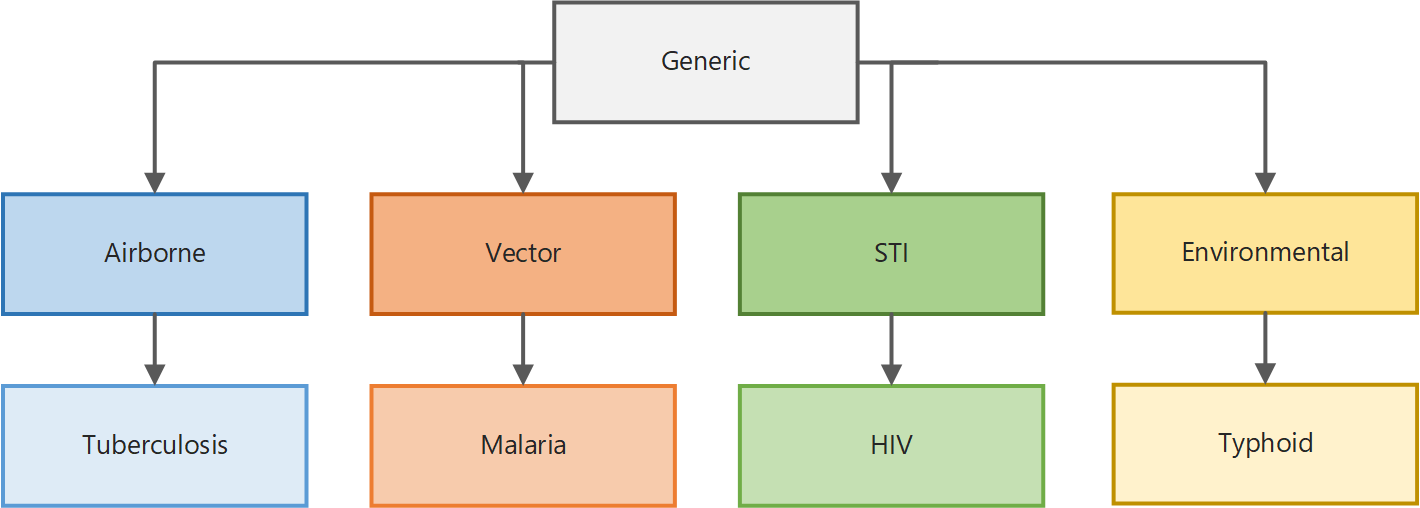Model overview#
Disease models play an important role in understanding and managing the transmission dynamics of various pathogens. We can use them to describe the spatial and temporal patterns of disease prevalence, as well as to explore or better understand the factors that influence infection incidence. Modeling is a key step in understanding what treatments and interventions can be most effective, how cost-effective these approaches may be, and what specific factors need to be considered when trying to eradicate disease. The findings can be used to guide policy for implementing practical real-world solutions.
To understand the complex dynamics underlying disease transmission, epidemiologists often use a set of models called compartmental models. Developed in the early 20th century, these models stratify a population into groups, generally based on their risk or infection status. Underlying these models is a system of differential equations that track the number of people in each category over time. If you would like a more in-depth introduction to epidemiology and disease modeling, you may want to take the Epidemics course from The Pennsylvania State University through Coursera.
Epidemiological MODeling software (EMOD) is an agent-based model (ABM), another powerful tool used to help understand the complexity inherent in disease transmission systems. EMOD is a discrete time, Monte Carlo method simulator that simulates the simultaneous interactions of agents in an effort to recreate complex phenomena. Each agent (such as a human or vector) can be assigned a variety of properties (for example, age, gender, etc.), and their behavior and interactions with one another are determined using decision rules. EMOD and other ABMs must be run many times to produce probability distributions of potential outcomes, better capturing uncertainty than compartmental models.
These models have strong predictive power and are able to leverage spatial and temporal dynamics. Further, complex environments can be developed in which the agents act, and agents may “learn” from interactions or “adapt” to their environment. As a result, ABMs are excellent for identifying emerging properties of the system: patterns that are not explicitly modeled, but instead occur as a consequence of the rules that govern the agents.
EMOD can be calibrated to particular geographic locations, and the microsolver framework enables the model’s functionality to be highly modifiable. Further, the framework includes the ability to add intervention campaigns, and those interventions can be specified to target particular populations or sub-populations of human or vector groups. This intervention targeting is capable of simulating complex cascade of care systems, such as those used in the treatment of HIV. EMOD is very useful for determining the best intervention strategies to use in particular areas for burden reduction or elimination.
EMOD supports different simulation types for various diseases and transmission types. EMOD uses a layered architecture in which the base functionality is contained in the generic model and inherited by the transmission-level models that in turn are inherited by specific disease models. Because the EMOD modeling software can simulate all of these diseases, each “model” is more accurately referred to as a simulation type. For more information on the software architecture and inheritance, see Software overview.

Simulation type inheritance#
The generic model can be configured to simulate a variety of different diseases, such as measles or influenza. Support for other transmission mechanisms, such as sexual networks or vector transmission, is provided by the transmission-level models. These can be configured to model diseases we do not specifically support. For example, IDM collaborators have used the vector model to simulation the transmission of dengue and chikungunya. Finally, there are models for specific diseases that include logic for disease biology and treatment. Because of this inheritance, we recommend reviewing the documentation for the generic model and the transmission-level model relevant to your disease simulation. The fundamentals for configuring outbreaks, heterogeneity, and interventions are the same across all simulation types.
- Generic model overview
- Compartmental models and EMOD
- Disease outbreaks, reservoirs, and endemicity
- Adding heterogeneity
- Creating campaigns
